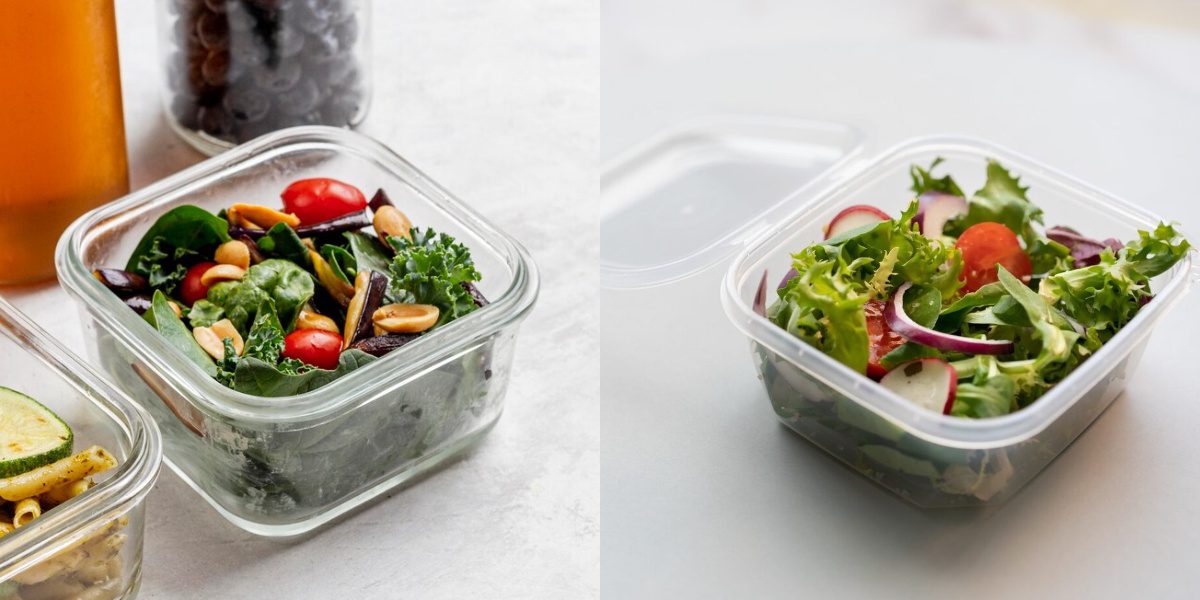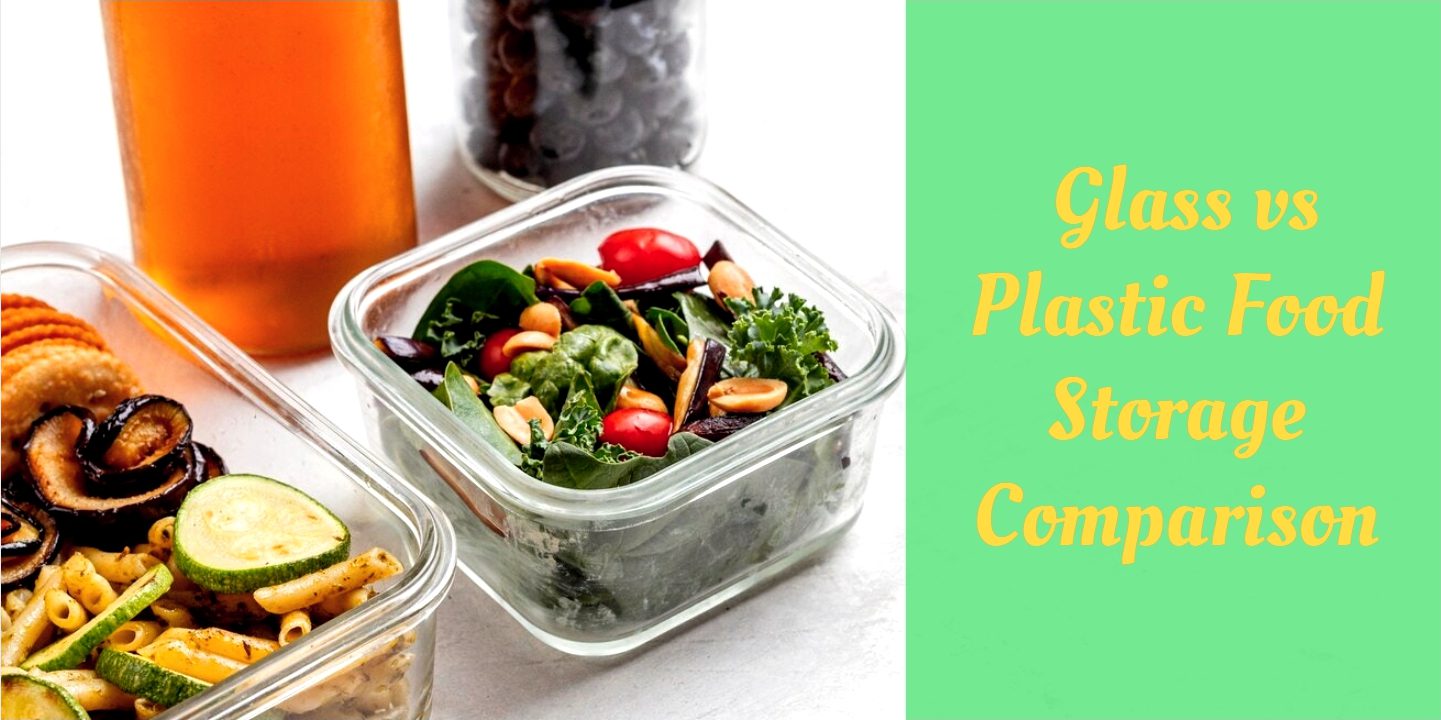In the modern kitchen, food storage is an essential aspect of maintaining freshness, convenience, and organization. When it comes to choosing the ideal containers, consumers often find themselves at a crossroads: glass or plastic.
And we’re here to give you a comprehensive glass vs plastic food storage comparison. While you can use both of these to store veggies, meals, and other stuff, they vary in multiple factors.
Both materials offer unique advantages and disadvantages, making the choice a matter of personal preference and specific needs. We’re gonna cover all the details and help you finally make a choice. Let’s dive in!
Plastic Food Containers
In a world where convenience is king, plastic food containers have become indispensable tools for storing and transporting food. They are versatile, and affordable, and come in a wide variety of shapes and sizes, making them suitable for both home use and professional settings.
Plastic food containers come in a variety of types, each with its own unique properties and intended uses. You can find one for any purpose, and they are all lightweight and handy to carry around.
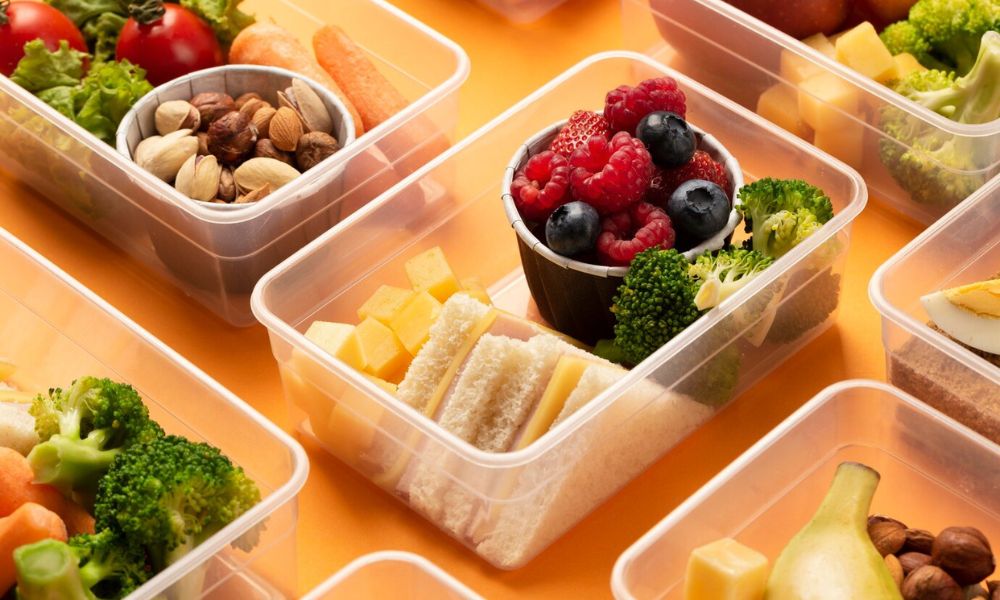
You may also like: Teflon vs Ceramic Stainless Cookware Comparison
Advantages of Plastic Food Containers
Lightweight and Portable:
Such containers are the epitome of convenience, making them a go-to choice for busy individuals and on-the-go lifestyles. Their lightweight nature makes them incredibly easy to carry, whether you’re packing lunches, transporting leftovers, or storing bulk ingredients. This portability allows you to enjoy fresh, home-cooked meals wherever you go, without sacrificing convenience.
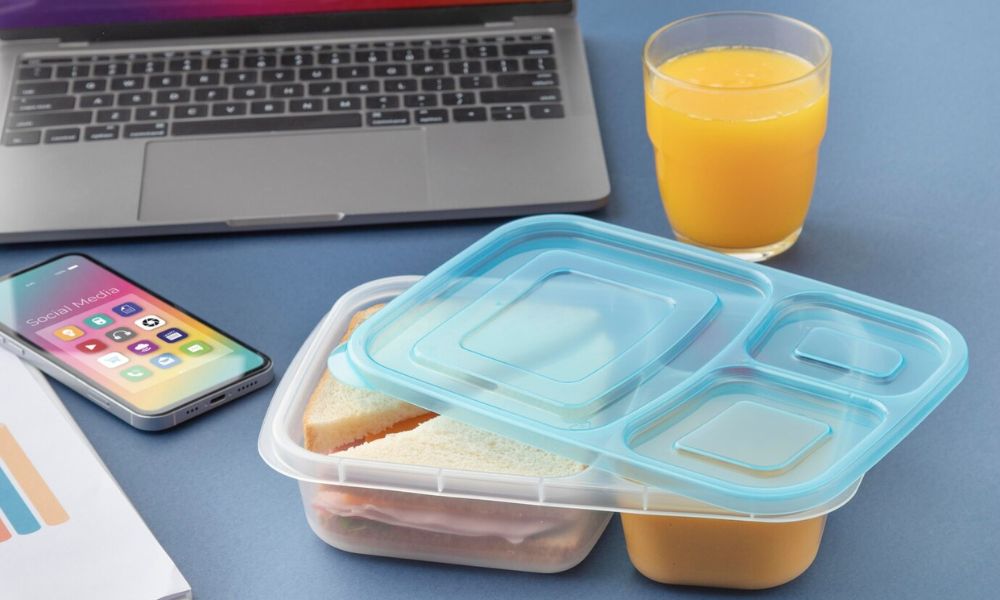
Versatile:
You can adapt them to a wide range of storage needs. Their durability ensures that they can defy daily use, making them a long-term investment in your kitchen toolkit.
Affordable and Reusable:
With their relatively low cost, they offer exceptional value for money. Compared to alternatives like glass or ceramic, plastic ones are significantly more affordable, allowing you to stock your kitchen without breaking the bank. Their reusable nature further enhances their value, as you can continuously use them without generating unnecessary waste.
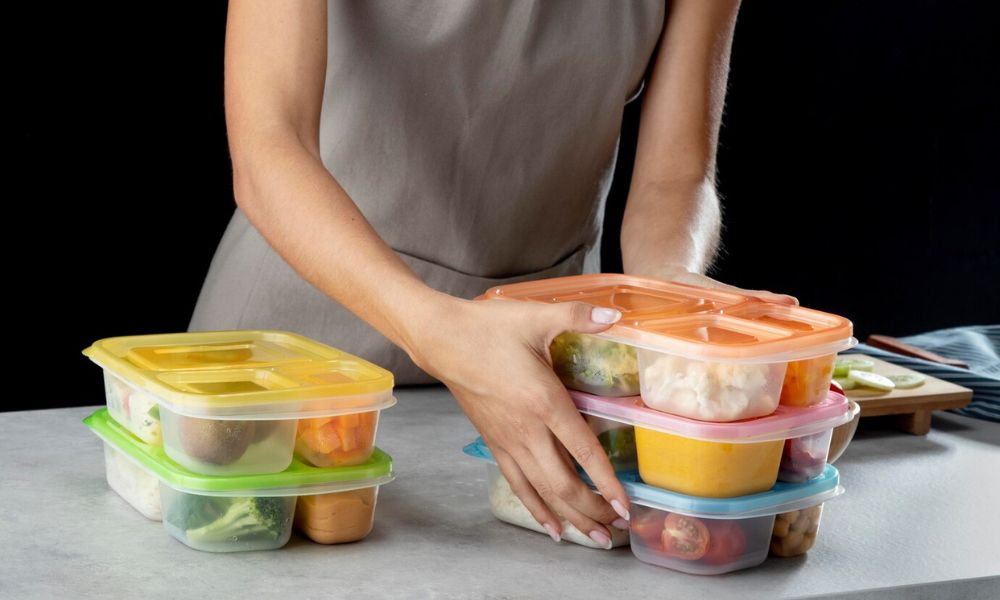
Easy to Clean and Maintain:
These are easy to clean, making them a hygienic and worry-free choice. Their smooth surfaces and dishwasher-friendliness allow you to effortlessly remove any food residue or spills, ensuring that your containers remain clean and sanitary.
Child-Friendly and Durable:
Such containers are not only convenient and safe, but they are also child-friendly. Their lightweight construction makes them easy for little hands to manage, and their stable materials can withstand the wear and tear of regular use by children.
This makes them ideal for packing lunches, storing snacks, and organizing pre-prepaid meals for children. In addition, they come in fun and colorful designs that appeal to children, making mealtime more enjoyable and engaging.
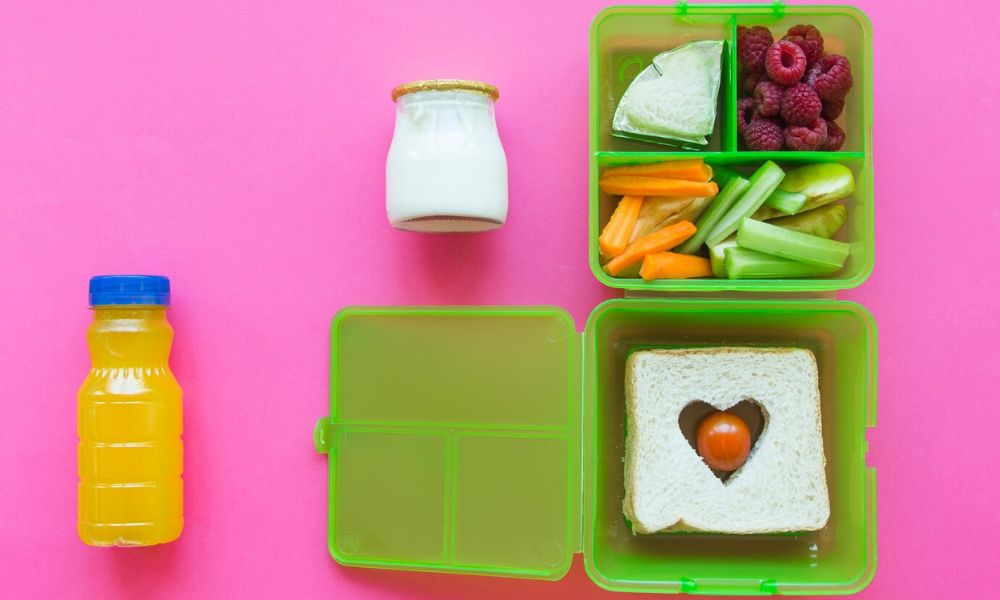
Disadvantages of Plastic Food Containers
Potential for Chemical Leaching:
Plastics, fundamentally polymers, are composed of various chemical compounds. Exposure to these chemicals can lead to a range of health problems.
When exposed to heat, acidic substances, or prolonged storage, these can leach into food, and cause health risks.
Limited Durability:
While they may seem sturdy, they are susceptible tear over time. Over time, repeated use can damage the container, making it less sturdy. These imperfections can allow air and moisture to infiltrate, compromising food freshness and potentially causing spoilage. Repeated exposure to heat can also cause the plastic to soften, warp, or even melt, rendering the container unusable.
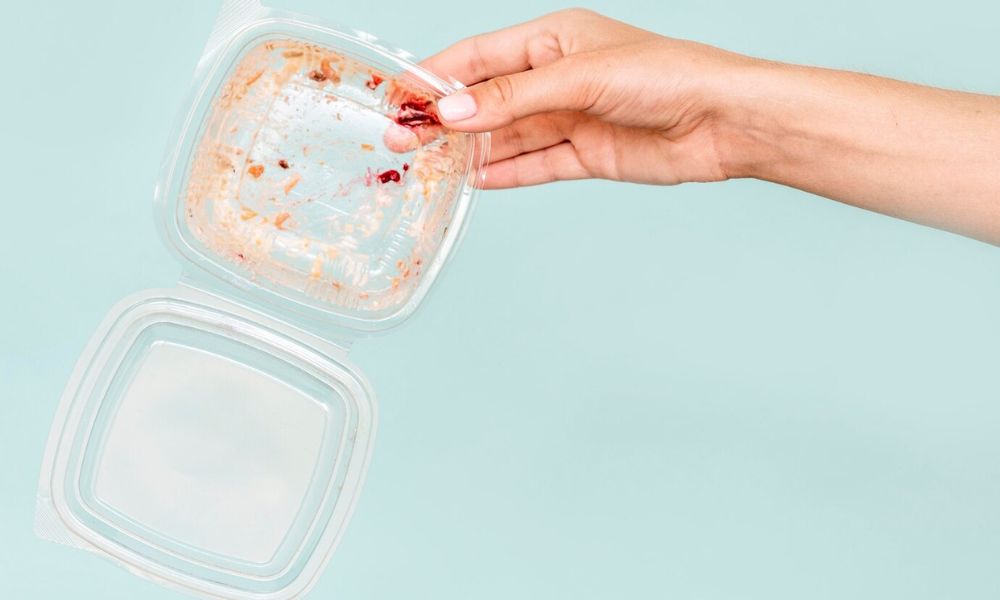
Lack of Heat Resistance:
Only those labeled as microwave-safe are can be heated. Using these incorrectly can release toxic chemicals into meals. Use only microwave- or oven-safe plastic containers.
This can lead to unpleasant taste and texture changes, and potentially pose health risks.
Short Durability and Safety Concerns:
They tend to have a shorter lifespan. We’ve already mentioned that they can damage overtime, making them unsafe for reuse. Discard damaged or worn-out plastic containers to avoid potential food contamination or safety hazards.
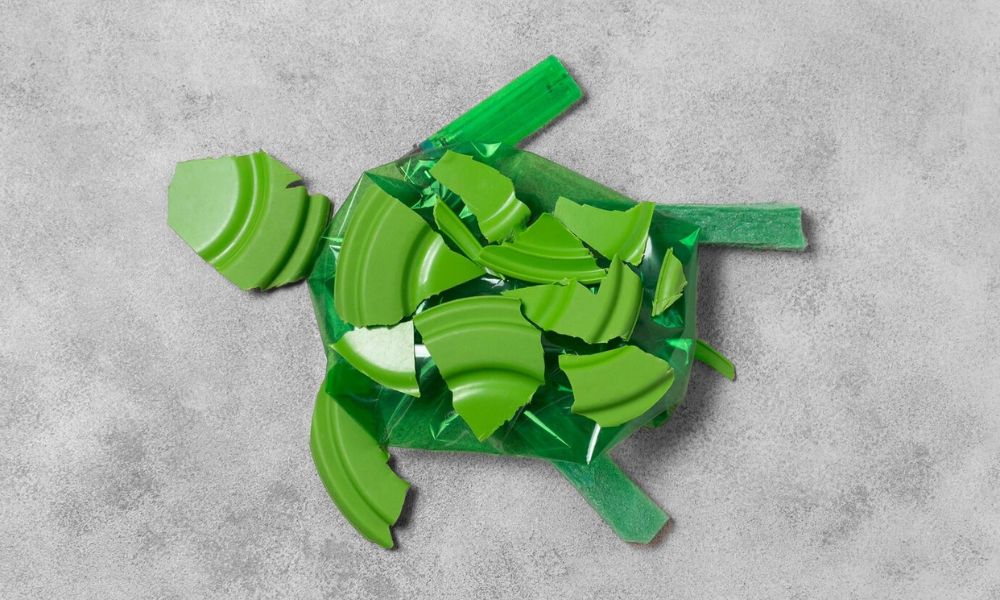
Limited Recycling Options:
While some of them can be recycled, the process is often complex and inefficient. Many plastic types are not accepted by curbside recycling programs and even those that are may not be recycled effectively due to contamination with food residue or improper sorting. This can lead to plastic waste ending up in landfills or incinerators, further contributing to environmental concerns.
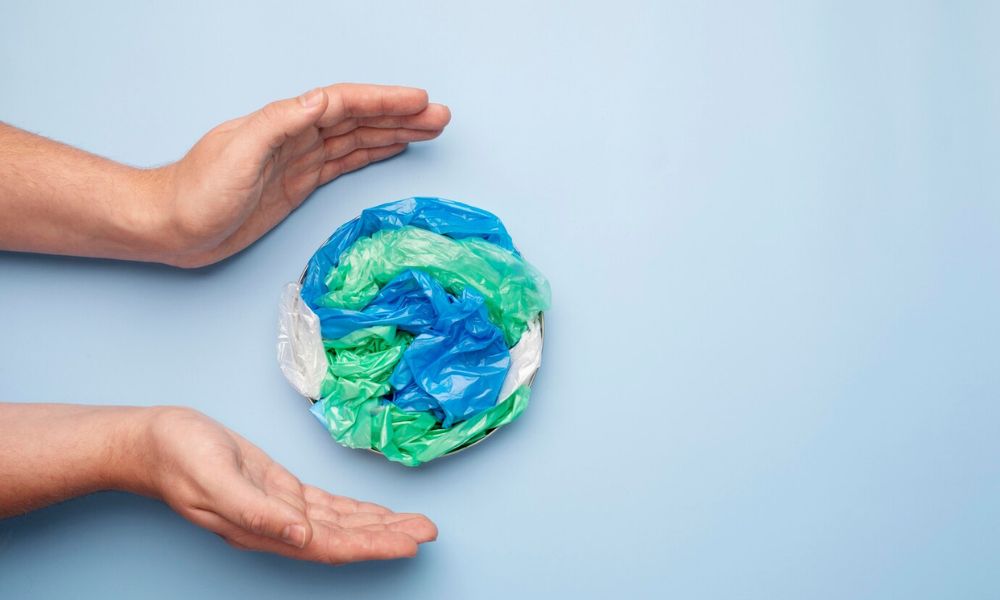
Check also: 7 Best Electric Food Choppers
Are Plastic Food Storage Containers Safe?
As you may know, these have raise safety concerns due to chemical leaching and environmental impact. Let’s delve into the safety of plastic food storage containers and identify the safe and unsafe types to use.
Safe Plastic Food Storage Containers
- Polyethylene Terephthalate (PET): This type is safe even when heated. It is typically found in clear plastic bottles.
- High-Density Polyethylene (HDPE): It is marked with the recycling symbol #2. it’s is sturdy and resistant to chemicals, making it ideal for storing a variety of foods, both hot and cold.
- Low-Density Polyethylene (LDPE): This one is often used for flexible plastic bags and wraps. While it’s typically called safe, don’t use it with items that are hot, fatty, or acidic.
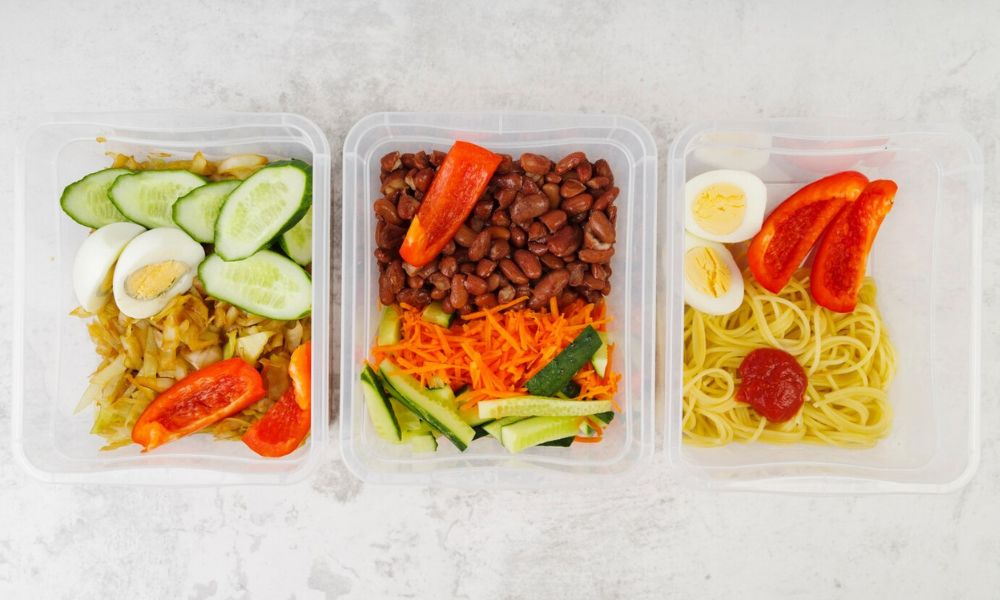
Unsafe Plastic Food Storage Containers
- Polyvinyl Chloride (PVC): It is often marked with the recycling symbol #3 and contains bisphenol, that has been linked to health concerns.
- Polystyrene (PS): This one is generally used for disposable food containers and is marked with the recycling symbol #6. When heating, chemicals are released which may not be safe for hot food or the microwave.
- Polycarbonate (PC): You can find such type in reusable water bottles and is marked with the recycling symbol #7. While some are marked as BPA-free, concerns about the safety of these alternatives persist. It’s best to avoid using PC containers for food storage.
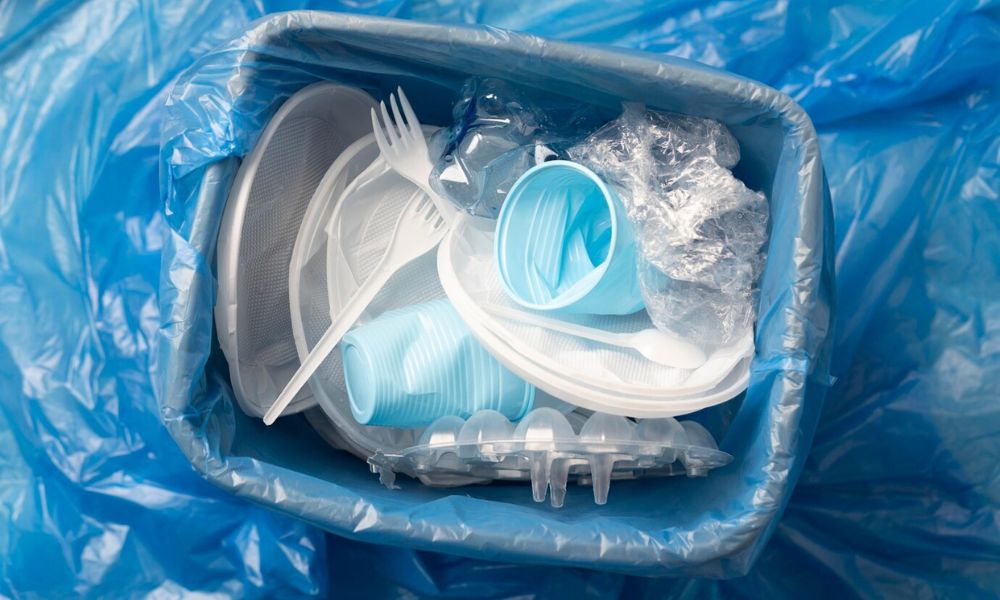
Glass Food Containers
In the realm of food storage, glass containers have emerged as a popular alternative to plastic, offering a range of benefits for both your health and the environment. Glass is a non-reactive material that is safe for storing food. It does not transfer any chemicals to food and preserves its freshness and flavor.
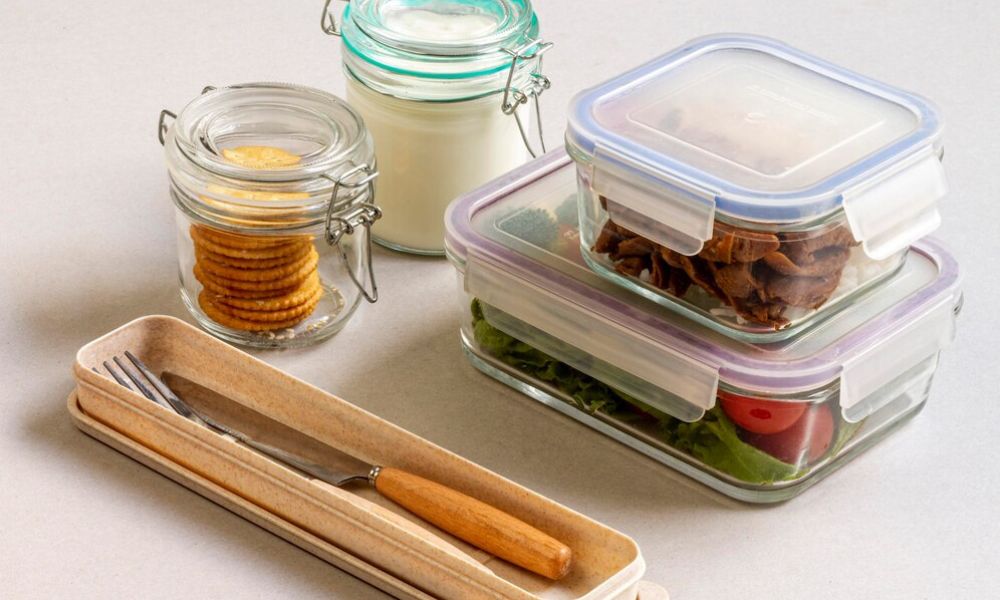
You might enjoy it: Best Pots and Pans for Gas Stove (Top 7 Sets in 2023)
Advantages of Glass Food Containers
Chemical-Free and Safe Storage:
It is a non-reactive material that keeps your food safe from harmful chemicals, even in extreme conditions. This is a safe and healthy way to store both hot and cold foods.
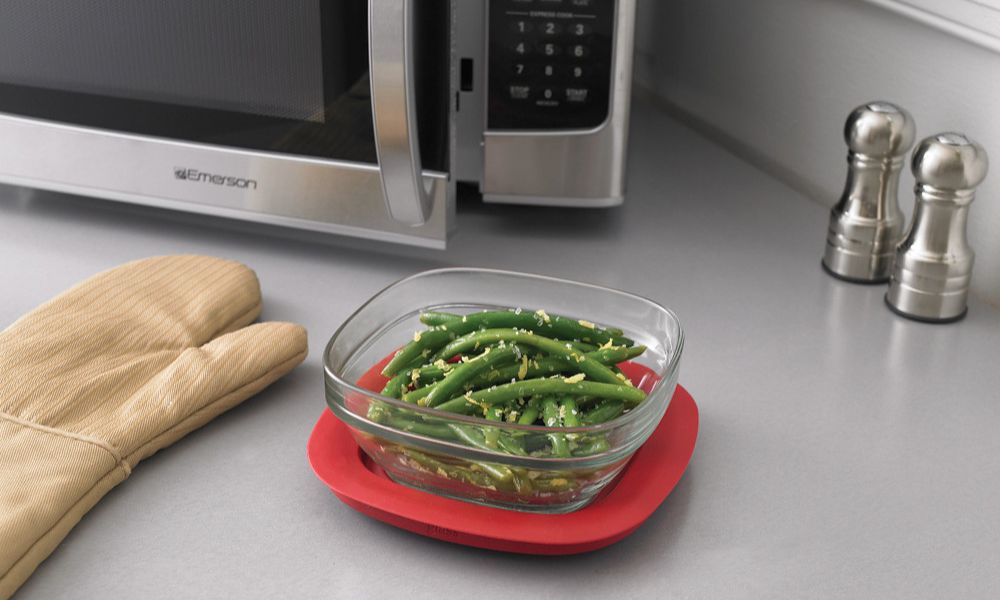
Microplastic-Free:
Such containers do not break down into microplastics, tiny fragments of plastic less than 5 millimeters in size that can contaminate the environment and potentially pose health risks. This is a significant advantage over plastic containers, which can release microplastics when they are heated or degraded over time.
Preserves Food Freshness:
Glass is a superior storage option that prolongs food freshness by preventing moisture loss and odor transfer. This conserves food and saves money. Glass containers are suitable for freezing without compromising food flavors or absorbing odors.
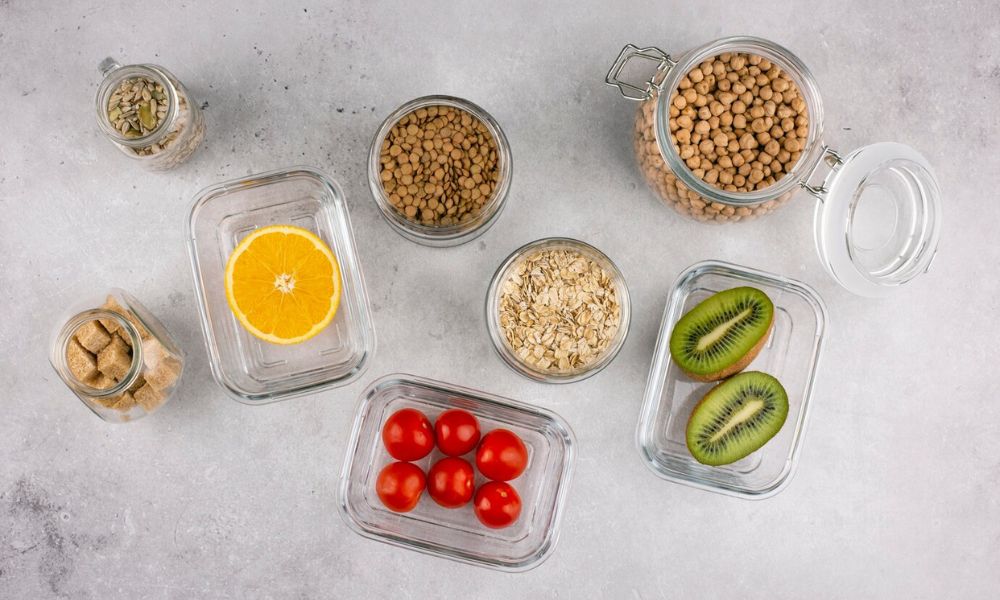
Recyclable and Durable:
They can be used over and over again, making them a sustainable alternative to disposable food storage options. It further minimizes waste and extending its lifespan. Glass is also a strong and durable material that can withstand daily use, preventing breakage and reducing the need for frequent replacements.
Eco-Friendly and Aesthetically Pleasing:
Those are a healthier and more environmentally friendly choice than plastic ones. They are also aesthetically pleasing and can add a touch of elegance to your kitchen.
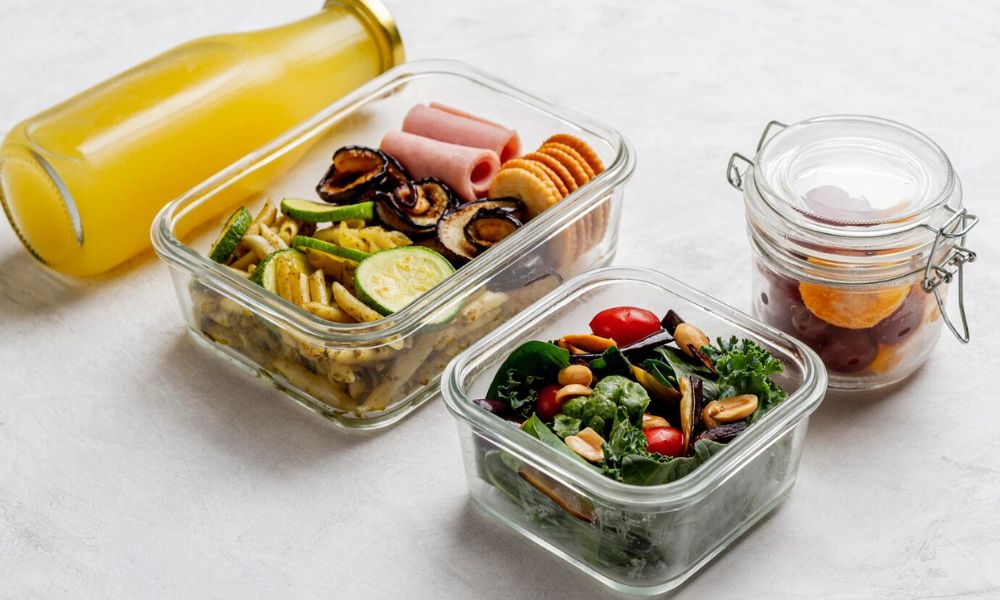
Easy to Clean and Sanitize:
Glass containers are easy to clean and sanitize, as they can be easily washed with hot, soapy water and rinsed thoroughly. They can also be safely placed in the dishwasher for thorough cleaning.
Disadvantages of Glass Food Containers
Weight and Bulk:
Glass containers are considerably heavier and bulkier than their plastic counterparts. This can make them inconvenient to carry, especially when packing lunches or storing large quantities of food. Moreover, their weight can put additional stress on cabinets and shelves, potentially causing damage if not properly stacked or stored.
Breaking and Chipping:
Glass is a fragile material, and it’s susceptible to breaking or chipping, especially if dropped or subjected to sudden temperature changes. This can lead to food contamination and potential safety hazards. It’s crucial to handle glass ones with care to prevent breakage.
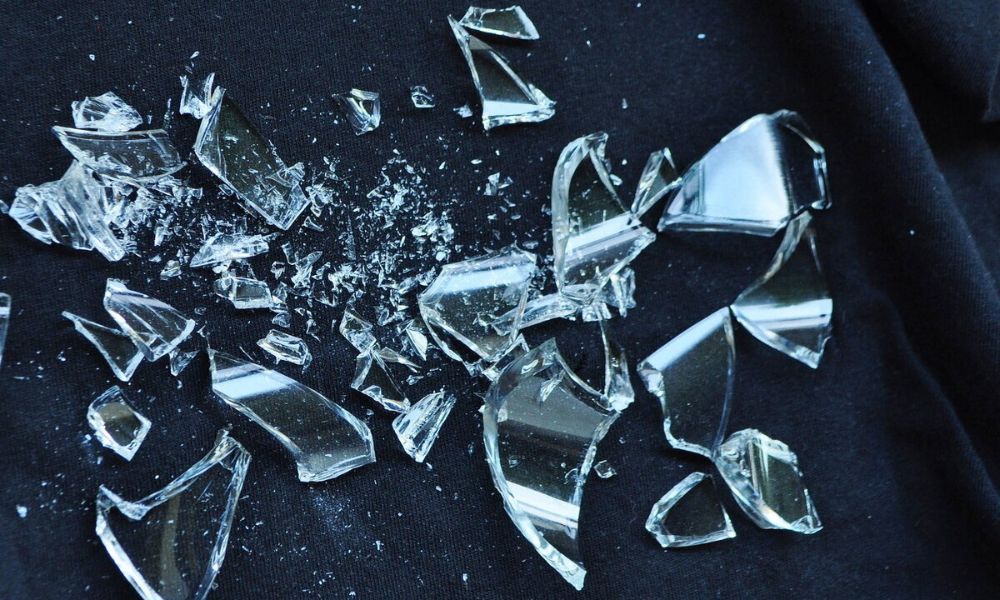
Not Child-Friendly:
Glass containers can pose a safety risk for children due to their fragility. They can easily break or chip if dropped or mishandled, causing cuts or injuries.
Limited Heat Resistance:
While glass is generally heat-resistant, it’s not recommended to use it for high-temperature applications like boiling water or using it in the oven. Extreme heat can cause the glass to shatter or warp, posing a safety hazard. Opt for specialized heat-resistant glass containers for these purposes.
Transparency and Staining:
Glass is transparent, which can be both a benefit and a drawback. On one hand, it lets you see the contents clearly, which can be helpful for food identification and inventory management. But it can also make food more susceptible to staining, especially if it contains acidic or oily ingredients.
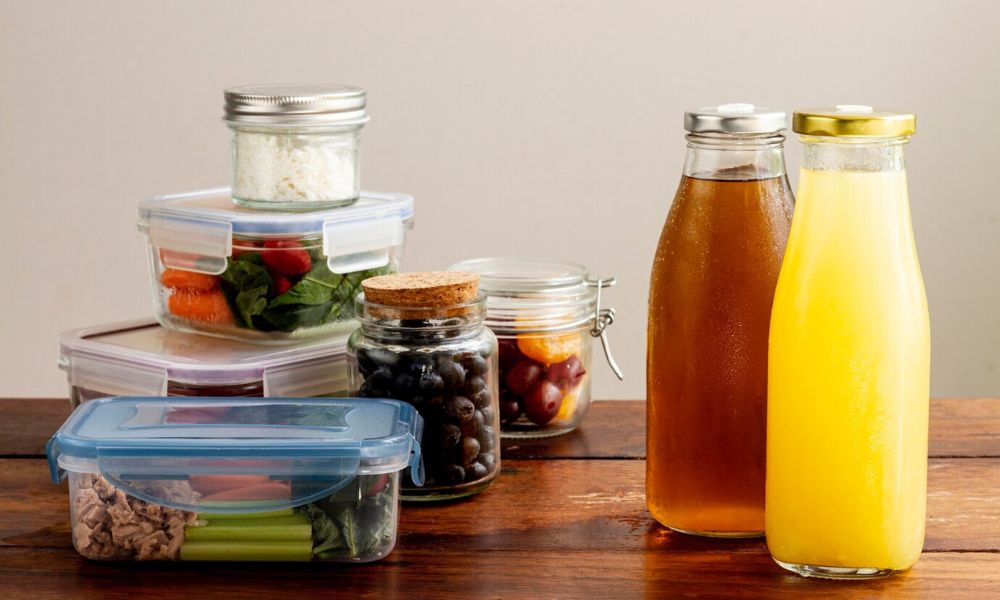
Potential for Condensation:
Glass ones can trap condensation, which can lead to moisture buildup and potential mold growth, especially when storing leftovers. To avoid it, it should be dried completely after washing and stored in a well-ventilated area.
Higher Cost:
These typically cost more than plastic ones. While they offer longer lifespans and are more environmentally friendly, the initial investment can be higher. If you’re on a tight budget, plastic ones may be a more affordable option.
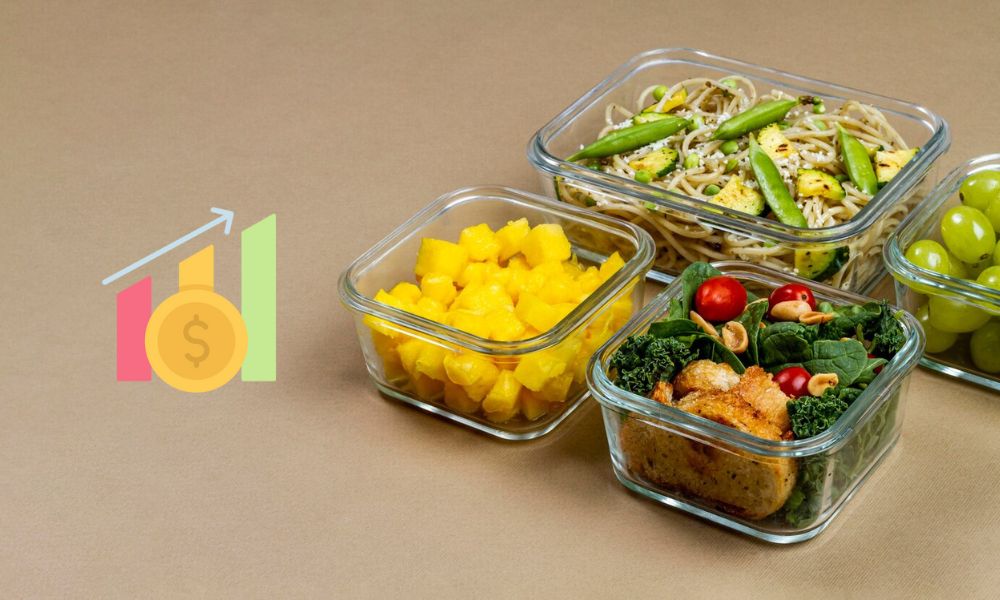
You may also check: Ceramic Knives vs Steel Knives
Choosing Between Plastic and Glass Containers
Making a descision requires consideration of ease of use, durability, and environmental impact. While both materials have their own set of pros and cons, it’s crucial to understand the nuances of each to make an decision that aligns with your needs.
It also highly relies on your needs and priorities. If you prioritize health, and sustainability, and are willing to handle glass with care, then glass containers are an excellent choice. However, if you require lightweight, durable, and heat-resistant containers and are on a budget, plastic may be a better option.
